Ukrainian sappers race world’s largest minefield
Deep in Ukraine's south, Ukrainian sappers face deadly mathematics: 3,000 deminers against 180,000 square kilometers of mine-riddled territory, with Russian forces adding more nightly.
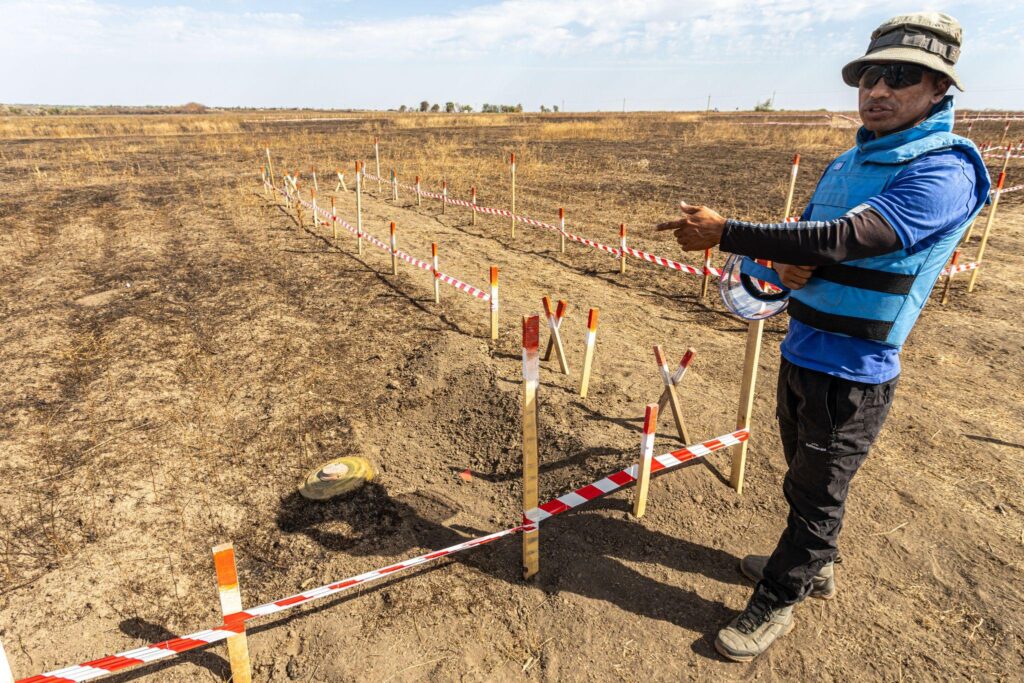

“If you hear explosions, don’t move and don’t panic,” instructs the international minesweeper officer, leading his demining unit through the blistering heat.
On this blistering August afternoon, his team from Norwegian People Aid is working in Maksymivka, a small village in Mykolaiv Oblast located 40 kilometers (24.8 miles) from the Kherson front. During the early stages of the full-scale invasion, the frontline cut right through this hamlet, where Russians had set up firepoints to target Ukraine-controlled areas.
The Russian occupation and relentless shelling destroyed nearly 80% of the village’s houses. By the time it was liberated in November 2022, only ten households remained inhabited, with 60% of the village territory contaminated by landmines.
Now, a heavy silence hangs over the debris and the calcined tanks of Maksymivka, broken only by the clinking of tools and the hum of drones. While Russian troops no longer threaten returning residents, the buried landmines pose the greatest danger to those trying to rebuild their lives in the area.
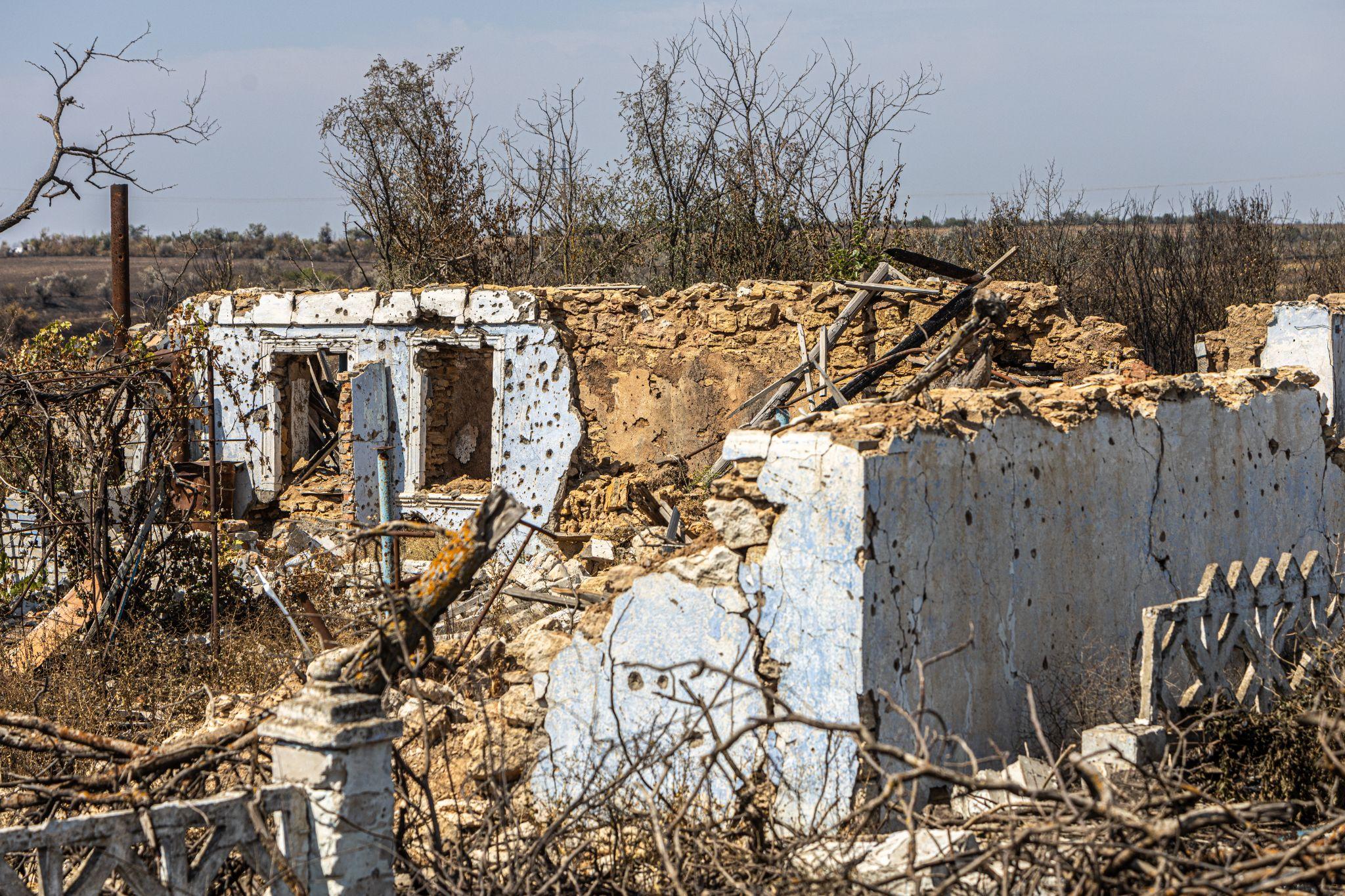
The world’s most mined country
Since the beginning of Russia’s invasion in February 2022, Ukraine has become one of the world’s most mined countries, surpassing nations like Afghanistan, Vietnam, and Syria. According to the UN, around 180,000 square kilometers (69,500 square miles) — over 30% of Ukraine’s territory — are now tainted by landmines and unexploded ordnance.
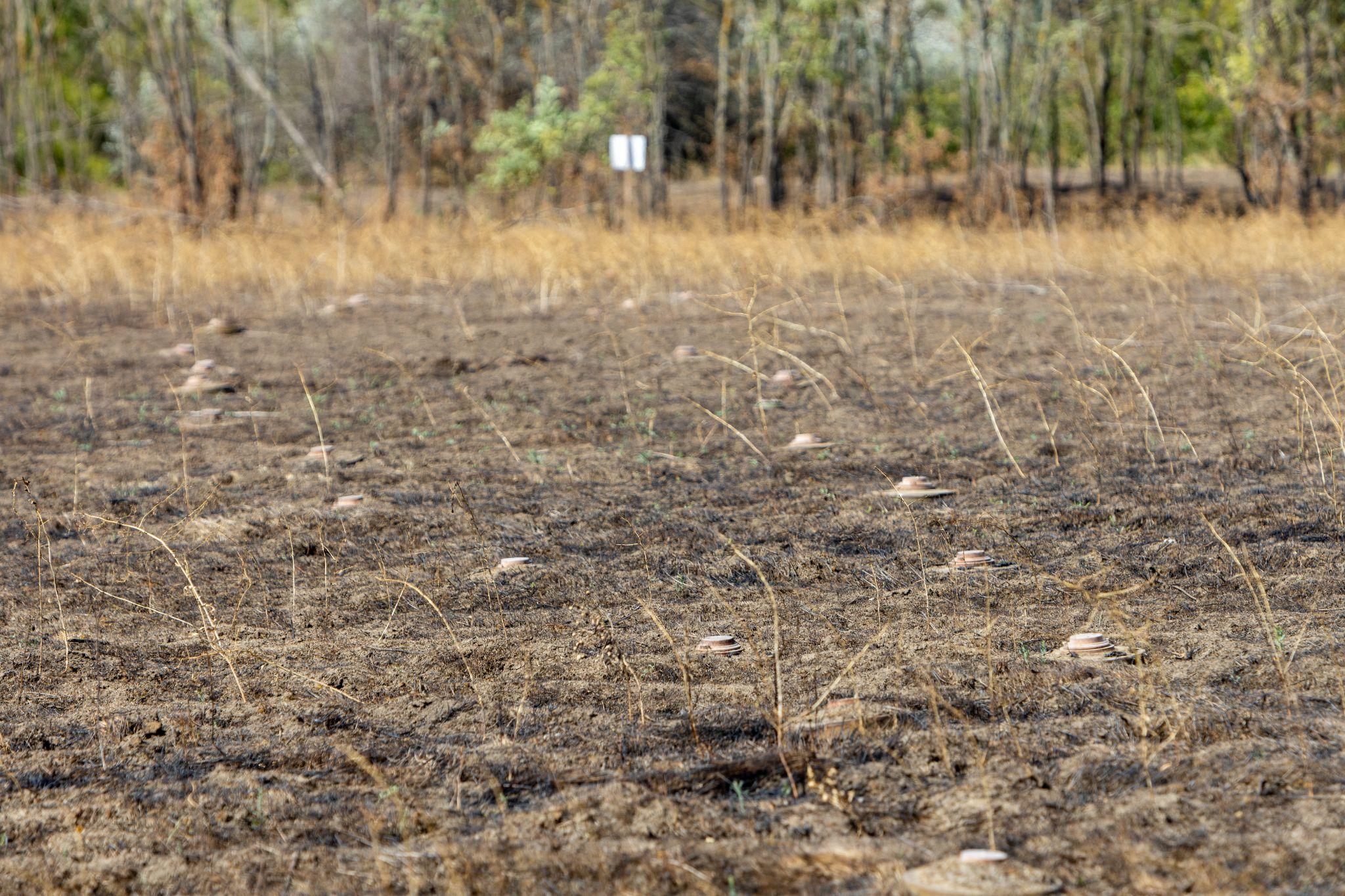
These figures reveal the uphill battle demining teams take on day after day.
One such team is from Norwegian People’s Aid (NPA), a humanitarian NGO that provides relief in post-conflict areas across more than 30 countries. Since launching its mine action program in May 2022, NPA has supported Ukraine’s national mine action operator, becoming the only international organization accredited for comprehensive mine action in the country.
In addition to equipping and training personnel, NPA has deployed 19 manual clearance teams to the Mykolaiv and Kherson oblasts in southern Ukraine, areas liberated in November 2022. A coordinator overseeing the region, who requested anonymity for security reasons, recalls the early days of their mission when the team could clear only one square meter per day without the help of dogs and machines.

Today, with the introduction of modern equipment, productivity has increased tenfold. “With the new tools, even manual deminers are working faster now,” the coordinator says.
The speed of operations has picked up thanks to technical game-changers like drones, binoculars, and rangefinders — optical, laser, or ultrasonic devices that measure distances to target objects. These tools allow teams to detect unexploded ordnance without stepping into hazardous areas.
These tools help non-technical survey teams root out mines by gathering data through technology and interviews, all without breaking ground. This approach has stepped up both the safety and precision of demining efforts.
“The drones give us a bird’s-eye view of where the mines might be. They allow us to identify potential hazards without harming anyone,” the officer explains.
Despite the progress made, the task remains monumental. Depending on the terrain and the density of mines, each month presents new challenges.
“It’s always difficult to compare one month to the next, or one site to another, minesweeping operations can be very random,” the officers says. “But in general, we’ve seen significant improvements. In some instances, we’ve gone from clearing just a few square meters to clearing thousands.”
However, as humanitarian demining progresses, so too do the Russian troops.
The leading cause is the widespread use of the TM-62 mine, a Soviet-era anti-tank mine widely used by the Russian troops in Ukraine. Designed to disable or destroy heavy armored vehicles, the TM-62 is typically triggered by pressure of around 150 kilograms (330 lb) from a vehicle.
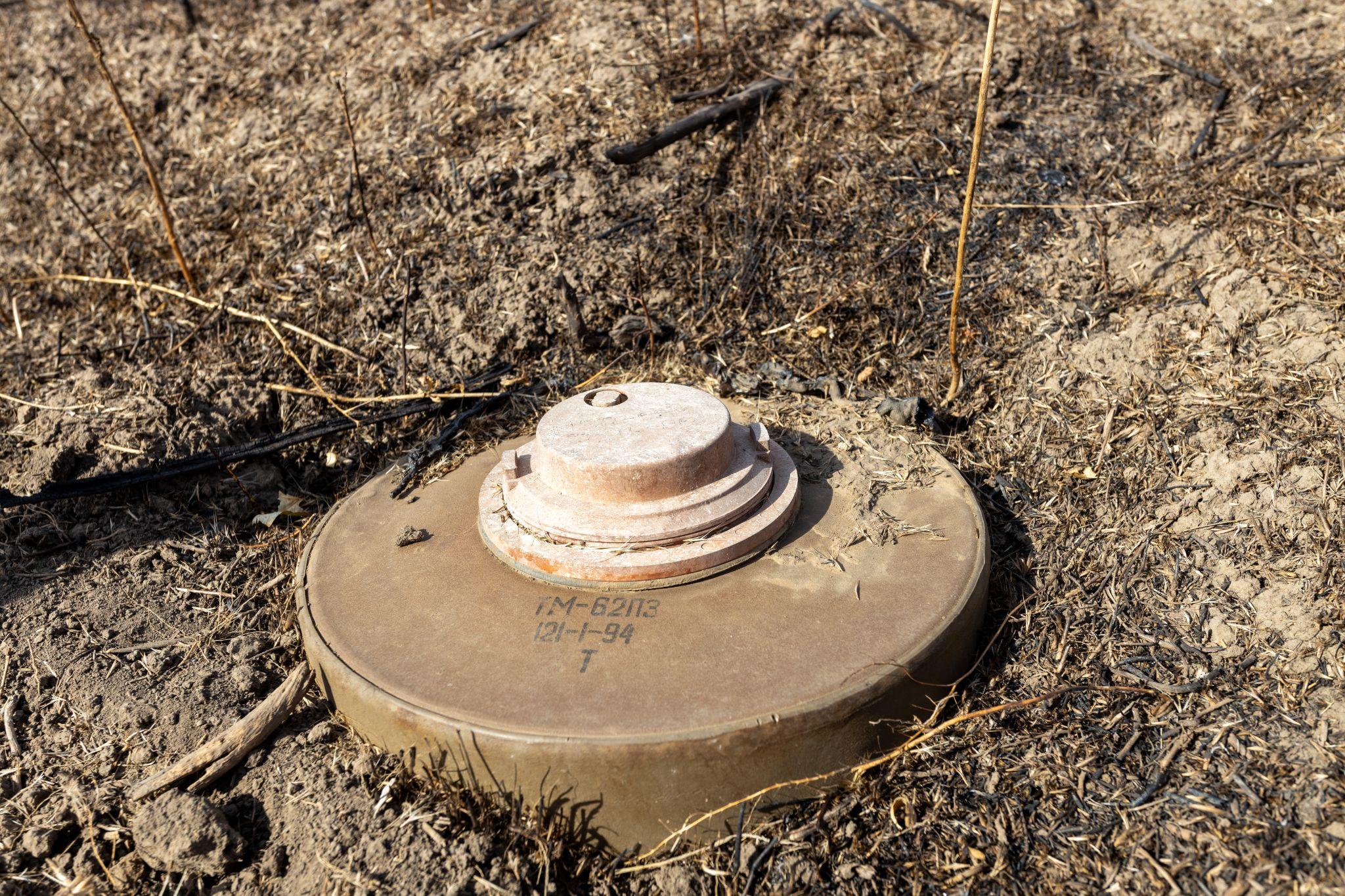
Russia has also started using drones to drop mines, including TM-62 variants, directly onto enemy positions. This tactic allows for precision strikes while keeping ground troops safe.
However, it could also scatter mines over wider areas, transforming previously safe zones into danger spots and throwing demining efforts off balance.
Where lives balance on a knife’s edge
For Ukraine, demining is not just a technical necessity. Clearing these vast tracts of land is essential for agriculture, reconstruction, and civilian movement. Yet, the contamination is so severe in the hardest-hit areas that entire villages have crumbled into ghost towns.
“The people in these areas can’t go back to their homes until we’ve ensured they’re safe,” says the NPA demining unit chief. “In Maksymivka, for example, the destruction was so extensive that many residents aren’t even considering returning.”
According to Ukraine’s prime minister, fully demining the country’s territories would require $37 billion and 10,000 minesweepers, a stark contrast to the 3,000 active sappers currently on the ground. NGOs like Norwegian People’s Aid contribute nearly a third of this figure.
One of them is 34-year-old Tetiana Danylenko, who lost her position as an air traffic agent after the Russian missiles struck the Mykolaiv International Airport on the third day of the full-scale invasion. For this mother of two, it became the second time when the Russian invasion turned her life upside down.
“I come from the Donbas, where the conflict began in 2014. It’s important to me that we make these lands safe again.”
Tetiana, who balances her work as a deminer with the responsibilities of motherhood, admits it is no small feat, and she has to rely on her children’s support. Her 12-year-old daughter stepped in to look after her younger brother and help her around the house, easing some of Tetiana’s burden.
“I can’t give up this work. I’m doing it for them, for their future,” the woman says.
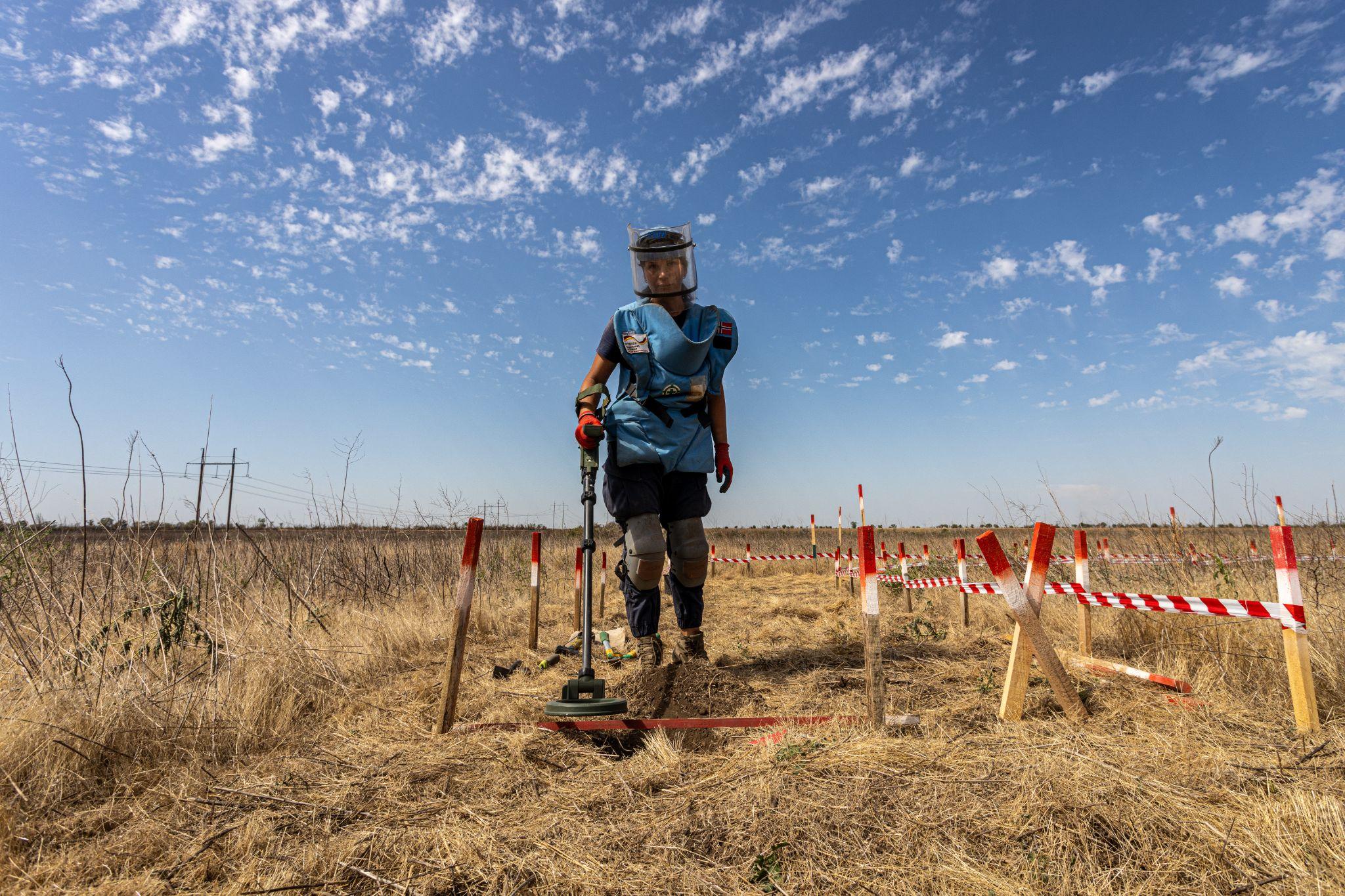
Tetiana’s path is not unique in Ukraine. War-induced unemployment has also driven Ihor Bondar, once an executive in a local business, to temporarily take demining as a means of making ends meet.
“Why did I decide to do it? Honestly, It’s also a financial question. Unfortunately, it’s because I’ve lost my job before the war,” he says.
For the deminers, like Tetiana and Ihor, the stakes are always high. The pressure they work under is unrelenting; a single misstep can be fatal. “The danger is always there,” Ihor continues.
As of April 2024, explosive hazards have claimed 297 civilian lives and injured 662 more, according to the State Emergency Service of Ukraine. Demining teams in southern Ukraine have reached over 11,400 people with risk education programs, yet much of the countryside remains fraught with danger.
Yet, one group of civilians stands out as particularly vulnerable to the devastating toll of mine pollution.
The mine-laden breadbasket of Europe
As of August 2024, Ukraine’s parliament reported 128 mine-related deaths among farmers, representing nearly half of all confirmed civilian casualties. With mine-contaminated areas affecting 6.37 million Ukrainians, small-scale agricultural producers working on hazardous land are taking the brunt of the crisis — both physically and economically.
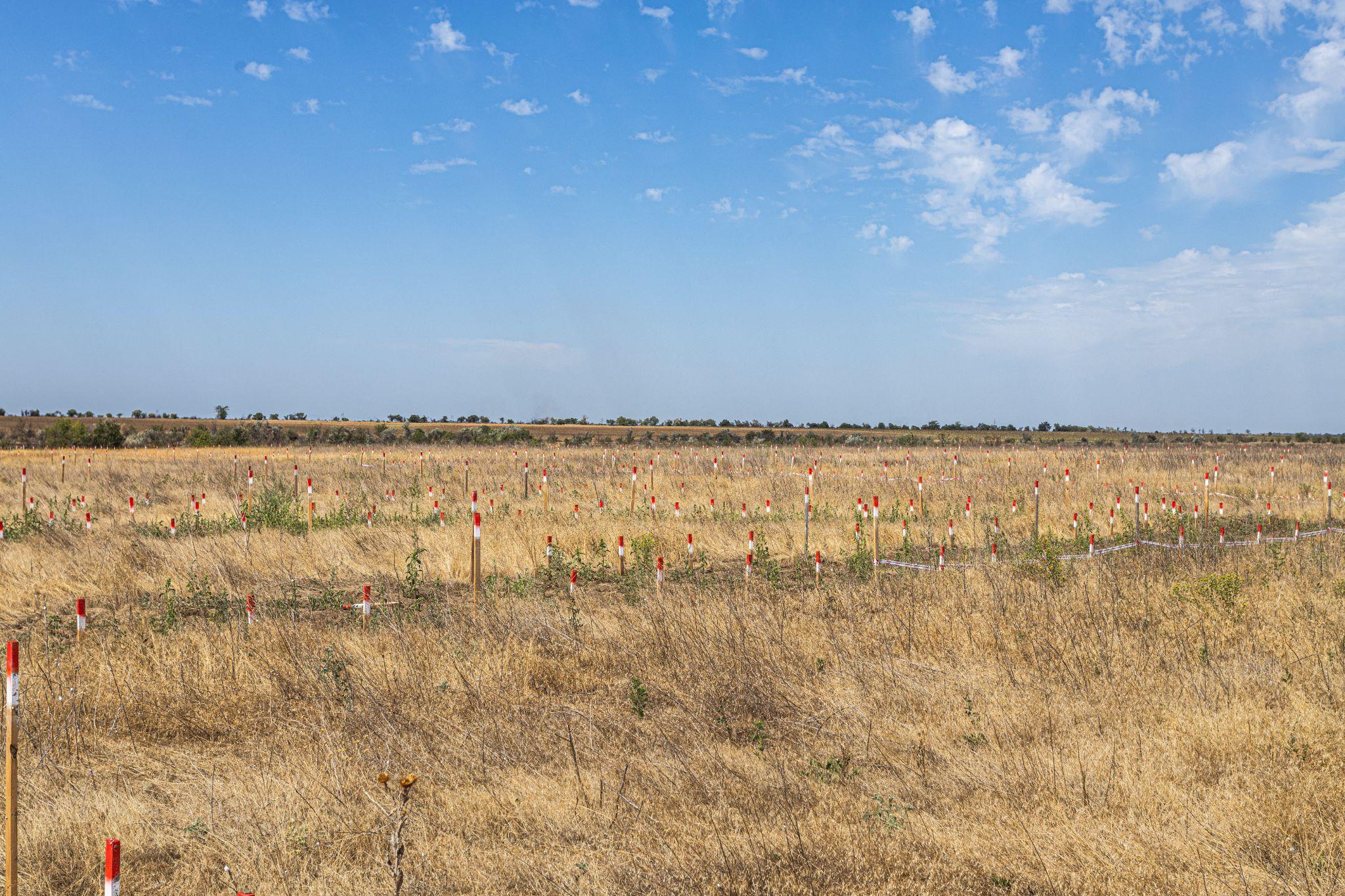
Before the full-scale invasion, agriculture accounted for 11% of Ukraine’s GDP. The war has rendered a quarter of the country’s arable land unusable, slashing Ukraine’s GDP by $11.2 billion annually, or 5.6%, according to the Tony Blair Institute.
As mine pollution drains Ukraine’s war chest, global food security is also at stake. Once a major food producer, Ukraine exported up to 90% of its harvests to developing nations. Now, with production plummeting, food prices in food-insecure regions have soared —increasing over 26% in East Africa and a staggering 200% in famine-ravaged Sudan.
With NGOs like Norwegian People’s Aid leading the charge in demining efforts, the process could stretch into decades.
International watchdog Landmine Monitor estimates that fully clearing Ukraine could take 30 years or more — an assessment echoed by Ukraine’s Ministry of Defense. In 2023, deminers marked more than 12.4 million square meters (4.79 square miles) of hazardous land, but only a tiny fraction has been cleared.
“Who else but us can clear these territories? It’s our land, our responsibility to cleanse it of the dangers left behind,” Ihor says.
Related:
- An entrepreneur’s journey to leading one of Ukraine’s deadliest drone units
- Inside Sudzha, where Russia’s war comes home to bite
- Russia’s war devastates Black Sea ecosystems and communities
- Ukraine deploys demining drones to break Russia’s Dnipro wall
- Chasiv Yar’s survival rests on daring night drone team


